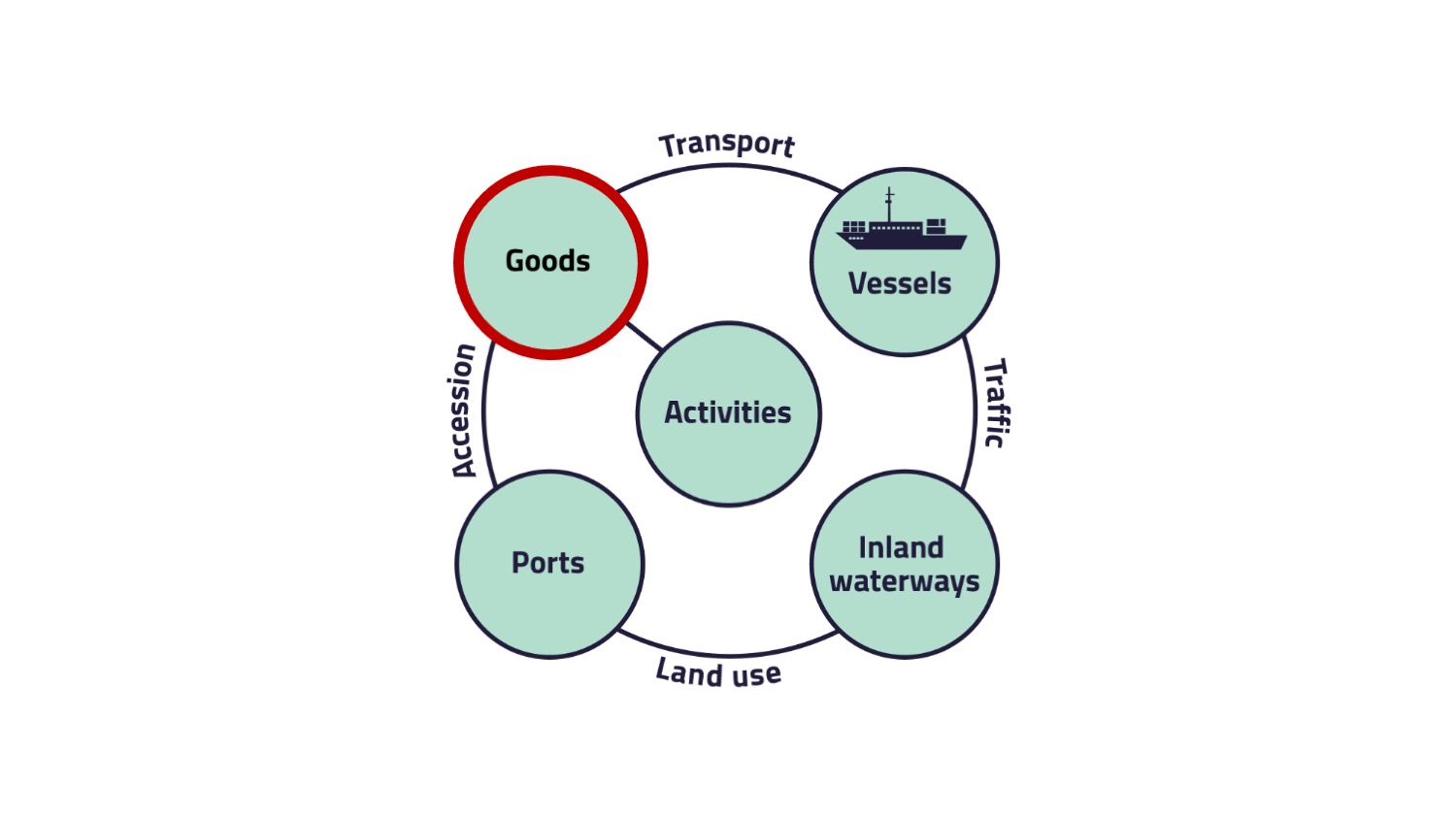Inland Waterway Transport System
In this section you will learn more about the inland waterway transport system and
its different elements goods, vessels, inland waterways and ports.
This topic follows the structure of the conceptual system model of
transport and traffic.
3. Goods
One element of the conceptual system model deals with the types of goods, being typically transported with the presented mode of transport. We will show you on this page, what types of goods are typically transported and roughly what the demand is.

At the EU level, the top 4 categories accounted for more than half of all goods traffic on EU inland waterways were:
- metal ores and other mining and quarrying products, peat, uranium and thorium
- coke and refined petroleum products
- chemicals, chemical products and man-made fibers, rubber and plastic products, nuclear fuel and
- products of agriculture, hunting and forestry, fish and other fishing products.
The relation between goods and vessels is called transport.
Transport
Today in most European countries the demand for inland waterway transport is driven by the hinterland transport of international supply chains. However, there is also a demand for inland waterway transport at the regional level, especially for bulk goods such as raw materials for energy production and agriculture. In some cases, very heavy goods or goods that are too large for the rail and road network are also transported on inland waterways. Compared with other modes of transport, road and rail, considerably fewer goods are transported on inland waterways. In Europe, the total transport volume is around 470 million tons, while the transport volume in Germany is around 172 million tons.
After the element goods, we will move on to the vessels needed for the operation of inland waterway transport.
Literature
Literature
Bundesministerium für Verkehr und digitale Infrastruktur (2020): Verkehr in Zahlen 2020/2021. 49. Jahrgang, URL: https://www.bmvi.de/SharedDocs/DE/Publikationen/G/verkehr-in-zahlen-2020-pdf.pdf?__blob=publicationFile (last access: 30.03.2022).
Eurostat (2025): Goods transported by inland waterways. https://ec.europa.eu/eurostat/statistics-explained/index.php?title=Inland_waterway_transport_statistics#E2.80.98Metal_ores_and_other_mining_and_quarrying_products.E2.80.99_-_main_product_category_transported (Last access: 15.05.2025).
Flämig, H., Sjöstedt, L., Hertel, C. (2002): Multimodal Transport: An Integrated Element for Last-Mile-Solutions? Proceedings, part 1; International Congress on Freight Transport Automation and Multimodality: Organisational and Technological Innovations. Delft, 23 & 24 May 2002. (modification of Sjöstedt 1996)
Eurostat (2025): Goods transported by inland waterways. https://ec.europa.eu/eurostat/statistics-explained/index.php?title=Inland_waterway_transport_statistics#E2.80.98Metal_ores_and_other_mining_and_quarrying_products.E2.80.99_-_main_product_category_transported (Last access: 15.05.2025).
Flämig, H., Sjöstedt, L., Hertel, C. (2002): Multimodal Transport: An Integrated Element for Last-Mile-Solutions? Proceedings, part 1; International Congress on Freight Transport Automation and Multimodality: Organisational and Technological Innovations. Delft, 23 & 24 May 2002. (modification of Sjöstedt 1996)